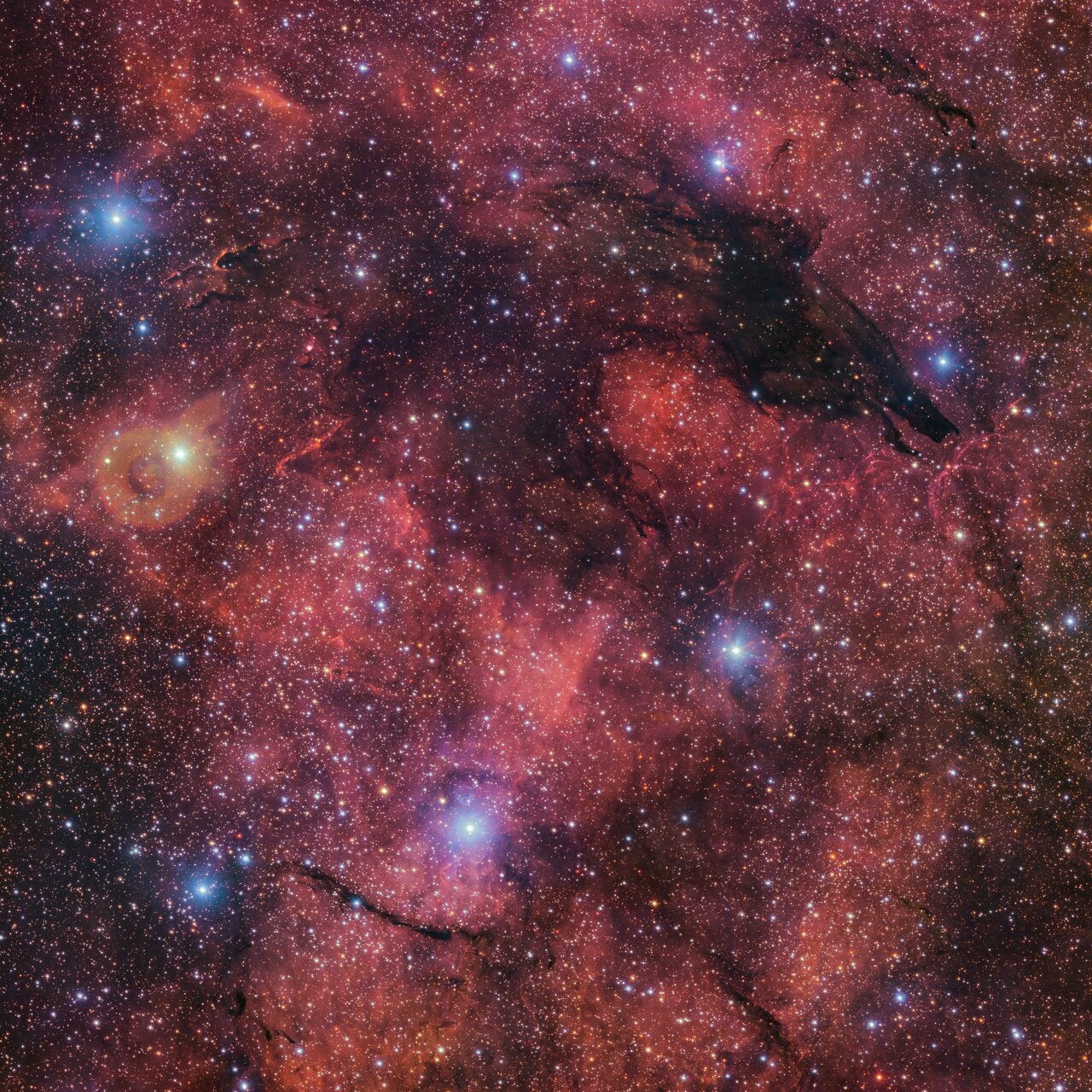
This artist’s impression shows a so-called dark comet in our solar system. Credit: NASA/JPL-Caltech
The water that makes up the oceans has been a key ingredient in the development of life on Earth. However, scientists still don’t know where water comes from here on Earth.
A guiding idea is that space rocks such as comets and asteroids deliver water to Earth through impacts. As a planetary scientist, I’m curious about what types of space objects might have led to the formation of the oceans. For the past few years I’ve been studying a type of object I’ve called a dark comet, which just might be the culprit. In a new study published by me and my colleagues in December 2024, we discovered two classes of these elusive dark comets.
What is a comet?
The solar system is collaborating with small bodies such as comets and asteroids. These space rocks were the fundamental building blocks of planets in the early solar system, while the remaining remnants are the comets and asteroids seen today.
These objects are also pathways through which material can be transported throughout the solar system. These little worlds can contain things like rubble, ice, and organic material as they fly through space. That’s why researchers see them as good potential candidates for providing ice like water and carbon dioxide to the Earth as it was forming.
Traditionally, the difference between comets and asteroids is that comets have beautiful cometary tails. These tails form because comets contain ice, while asteroids presumably do not.
When a comet approaches the Sun, these ices heat up and sublimate, that is, they transform from ice into gas. The gas heats up due to sunlight and is then swept away from the comet’s surface in a process called outgassing. This outgassing brings with it rubble and small grains of dust, which reflect sunlight.
Asteroids, on the other hand, do not have cometary tails. They supposedly look more like classical rocks, without ice on the surface.
What is non-gravitational acceleration?
Material emitting gas from a comet’s surface produces a cometary tail and rocket-like recoil. The fast-moving gas pushes on the comet’s surface, causing it to accelerate. This process drives the movement of comets through space in addition to the movement driven by the gravitational pull of the Sun.
So when comets emit gas, they have what planetary scientists call nongravitational acceleration, a motion that is not caused by the gravity of objects in the solar system. Planetary scientists typically measure the nongravitational accelerations of comets after detecting their cometary tails.
What are dark comets?
Our team has identified a class of small bodies in the solar system that take on some of the properties of both comets and asteroids. We called them dark comets.
These dark comets have non-gravitational accelerations like comets, so they experience rocket-like recoil due to comet outgassing. However, they don’t have the dusty tails of most comets.
In other words, they look like typical asteroids, but gravity alone cannot explain their motion.
The first interstellar object, ‘Oumuamua, was the first comet- or asteroid-sized body detected in the solar system from outside the solar system.
‘Oumuamua showed this same mysterious combination of no dust tail but comet-like non-gravitational acceleration, which led to many theories trying to explain what the object might have been. One possibility is that it was outgassing like a comet but without producing a dusty tail.
Since ‘Oumuamua was first spotted in 2017, my colleagues and I have identified other dark comets within the solar system. In our study we found seven new dark comets, bringing the total to 14.
Now that we’ve found more dark comets, we’ve noticed that they come in two flavors. The outer dark comets are larger – about a mile across – and are on more elliptical orbits farther out in the solar system. Inner dark comets are smaller – typically 1,000 feet in size – and on circular orbits close to Earth.

Contributions to the Earth’s oceans
It is not yet clear exactly what these dark comets are. They may not even be traditional comets if they don’t have icy surfaces.
However, the most likely answer for their non-gravitational accelerations is that they release water gas, like a comet, but do not produce a dusty tail – at least not the one we can see when we observe them with our telescopes.
If this is the case, there will surely be many more of these objects, parading around like asteroids, yet to be identified.
Since scientists don’t know for sure where Earth’s water comes from, if there are indeed many dark comets that have water near Earth, it’s possible that these dark comets contributed water to the early Earth.
These dark comets could tell researchers more about the origins of Earth’s oceans and the development of life here on Earth.
Reasons to be excited about the future
This research is really just the tip of the iceberg, because we’ve only just started finding these dark comets in 2023.
The Vera C. Rubin Observatory’s Legacy Survey of Space and Time, which comes online in 2025, will begin scanning the entire southern sky almost every night to spot anything that moves. This telescope, located on a mountain in Chile’s Atacama Desert, houses the largest camera ever built.
It will give astronomers nearly five orders of magnitude greater sensitivity for detecting moving objects in the night sky. It will probably help me and my colleagues discover many new dark comets in the near future.
Telescopes already operational, such as the Hubble Space Telescope and the James Webb Space Telescope, could also help my team observe outgassing or ice on the surfaces of the 14 dark comets we have already identified.
Finally, the JAXA Hayabusa2 extended mission plans to encounter one of the dark inner comets, 1998 KY26, in 2031. Therefore, we will be able to see the surface of a dark comet in exquisite detail.
Darryl Z. Seligman is a postdoctoral researcher in physics and astronomy at Michigan State University. He is supported by an NSF Astronomy and Astrophysics Postdoctoral Fellowship under award AST-2303553. This research award is partially funded by a generous gift from Charles Simonyi to the NSF Division of Astronomical Sciences. The award is given in recognition of significant contributions to the Rubin Observatory’s Legacy Survey of Space and Time.
Michigan State University provides funding as a founding partner of The Conversation US.
![]()
This article is republished from The Conversation under a Creative Commons license. Read the original article.

